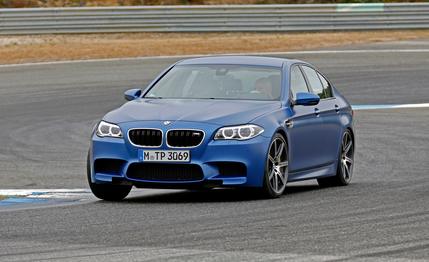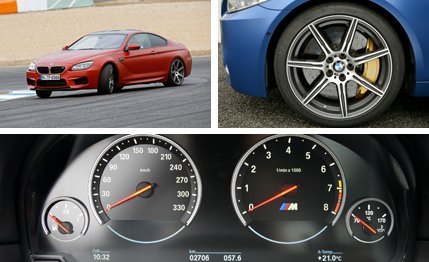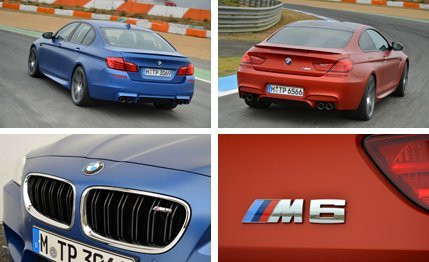
 First Drive Review
First Drive Review
Call our response to the latest BMW M6 Gran Coupe and M5 sedan lukewarm. Our tests prove they’re plenty fast, but they lack the visceral communication and engaging soul that made the E39 M5 legendary. We ranked the M5 third in a comparison test against its Audi and Mercedes rivals.
Now comes the Competition package, named not with the S6 and E63 AMG in mind but rather to denote track-day intentions. Realistically, few large, luxurious four-doors with six-digit sticker prices are going to flirt with racetrack guardrails, so think of the Competition package as a $7300 blue pill ($6000 on the Gran Coupe) that promises to revive the rorty, racing-derived spirit of the M subbrand’s heritage. The package is also available for the M6 coupe and convertible.
Brief drives in the M5 and M6 GC show that the Competition pack never lets the driver forget he’s sacrificed comfort on the altar of trackworthy performance. Stiffer springs, dampers, and anti-roll bars, ride heights lowered by 0.4 inch, the unique 20-inch wheels, and less compliant front suspension bushings see to that. Our first stint in an M6 with the package was on freeways and during afternoon rush-hour traffic entering Vancouver, British Columbia. Even with all the electronics dialed back to their Comfort and Efficiency modes, the firm ride and sharp responses made the exercise akin to walking a grizzly on a leash.


With no track handy, we settled for storming about on two-lanes through the hill country outside Bellingham, Washington, where we drove both models equipped with the seven-speed dual-clutch transmission. They feel so similar from behind the wheel that we had to double-check which was which after climbing out.
The Competition package brings black-chrome exhaust pipes and a retuned active rear differential but also adds 15 horsepower at the top end of the twin-turbocharged 4.4-liter V-8’s rev band (redline stands at 7200 rpm). Equipped cars also see an extension of the torque peak of 500 lb-ft, which is a longer mesa that now runs from 1500 to 6000 rpm instead of falling off at 5750. That gives bragging rights over the 560-horse versions that the neighbor in your gated community abides for being an M5 or M6 Gran Coupe early adopter. BMW says the tweaks are good for 0.1 second in the 0-to-60-mph dash in the sedans, which the standard cars accomplished in 3.7 seconds in our tests.


The biggest gain in driver involvement is that the hydraulically assisted rack-and-pinion steering has what BMW calls “more-direct programming.” It’s evident in quicker responses to steering inputs and is so immediate that you’d call it twitchy in the Sport or Sport Plus settings if the steering weren’t so absurdly overweighted. (The additional modes are chosen via a button beside the shifter or programmed into one of the two M buttons on the steering wheel.)
The best steering feel for road use came in Comfort mode, delivering better feedback than in any 5er of this generation at the cost of a small dead zone at center. The recalibrated suspension no doubt has something to do with this, and your results may vary depending on your own temperament and conditions. With the shocks in Sport (Plus is too hard for the road), the throttle at Sport Plus, and the shifter at its sharpest setting, this car feels more like a real M. To approach E39 playful-puppy mode, you’d have to find a way to cut more than 500 pounds from the curb weight, but that’s not in the cards for today’s cars saturated with safety tech and must-have luxury features. Owners of these modern Ms will just have to settle for their cars being way, way faster.